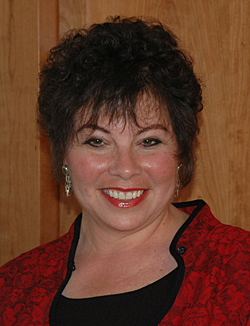Chicago is home to one of the largest populations of Mexicans in the United States, and the experiences of Mexican immigrants in the Windy City offer a revealing lesson in how the forces of racism work, according to the author of the new book Mexican Chicago.
In Mexican Chicago: Race, Identity, and Nation (Champaign: University of Illinois Press, 2008) historian Gabriela Arredondo, an associate professor of Latin American and Latino studies at the University of California, Santa Cruz, focuses on the period 1916-1939.
Chicago's major industries--steel, meat-packing, railroads, and agriculture--fed the initial wave of Mexican immigration that began in 1916 to address the labor shortage of World War I, said Arredondo. "Industry lobbied for exemptions to legislative restrictions and began recruiting in Mexico and Texas, looking for workers--especially nonunion laborers--lured with promises of opportunity and paid transportation," she said.
Those efforts coincided with turmoil in Mexico during and after the revolution of 1910, setting the stage for what Arredondo calls a "distinctive moment" in the formation of Mexican identity in the United States.
"This was the first time significant numbers of Mexicans moved to the United States--it's a much older migration than most people realize," she said. "They entered a preexisting world of multiethnic groups, yet the experiences of Mexican immigrants in Chicago didn't follow the same trajectory of assimilation and adjustment as the European immigrants before them."
The Mexican Revolution provided intellectual, ideological, and practical tools that encouraged Mexicans to "self-define as a group" in Mexico, said Arredondo. "Upon leaving Mexico, most identified with their hometowns or home states, but when they got to Chicago, they began to identify as Mexican, even as they increasingly became targets of discrimination and objects of prejudice."
Armed with revolutionary pride in Mexico, they battled growing racism, deportation, and marginalization, according to Arredondo, adding, "Over the years, 'Mexican' began to carry derogatory connotations with powerful consequences."
By 1929, upward of 30,000 Mexicans in Chicago made up only one percent of the city's population, but in the workplaces and neighborhoods of Packingtown, the Near West Side, and South Chicago, Mexicans were a "very significant presence," said Arredondo, whose research uncovered evidence of conflict over women between immigrant groups.
"There weren't a lot of Mexican women, so Mexican men would date Polish women, or Irish women, and the men would have it out in the workplace," she said. "Most of the evidence and writing and oral histories that have survived are about men, so I also tried to find women, and their stories really shed light on what was going on."
That first wave of Mexican immigration also coincided with the Progressive Social Reform movement, one goal of which was to assimilate immigrants into U.S. society. Mexicans jockeyed for position in the city's ethnic and racial hierarchies but lost out to other immigrant groups, said Arredondo.
"During the inter-war period, that's when being Mexican in Chicago meant being a race," said Arredondo. "It wasn't just ethnic. It became racial. They were poor, minimally educated non-citizens with limited skills, people who remained foreign. It was very powerful, very much about exclusion, segregation, expulsion, and deportation."
As repatriation and deportation of Mexicans increased in the 1930s, the fear of being deported brought Mexicans together as a group and solidified their status as outsiders, said Arredondo. By 1939, discrimination against Mexicans was codified in work practices, housing, and a myriad of social situations in their everyday lives.
The economic strains of the Great Depression exacerbated existing tensions between Mexicans and other immigrants, asserted Arredondo. "But racism is not just economic," she said. "There's something else that goes on in the daily interactions people are having."
"The economy was booming in the 1920s, yet even then, conflicts between Mexicans and their immigrant neighbors were sharp," she said. "And prior to 1916, Chicagoans had had no exposure to sizable numbers of Mexicans. There was nothing that preordained them to being anti-Mexican. But discrimination starts and deepens."
Noting that the U.S. Border Patrol was established in 1924, Arredondo sees parallels between the early waves of Mexican immigration and current tensions over border security. "I'm the kind of historian who likes to go back to the past to understand the present," she said. "As happened in Chicago in the 1920s, if the meaning of Mexican becomes very derogatory to the police or politicians or nativist groups, for instance, it starts to get codified in behaviors and expectations, resulting in police brutality or racial profiling, and we see deportations of U.S. citizens, de-lousing stations at the border, and the kinds of groups we see monitoring the border today."
"This chapter of our history presents an interesting window into how race works," said Arredondo. "Race as a process operates in very subtle ways. It doesn't have to be a lynching or a cataclysmic event. It's created and given life in our everyday interactions with each other."
####
Contact the author at jmcnulty@ucsc.edu.



